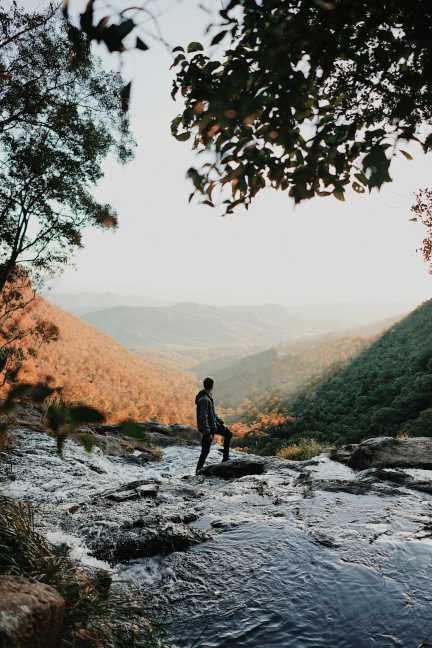When it comes to exploring the great outdoors, there’s no better place to start than with our country’s national parks. From towering mountains to lush forests and pristine lakes, national parks offer a wide range of natural wonders just waiting to be discovered. If you’re new to the world of national parks, don’t worry – this beginner’s guide will help you navigate this vast and diverse landscape with ease.
What are National Parks?
National parks are protected areas of land managed by the federal government for the preservation of the natural environment and the enjoyment of visitors. There are currently 63 national parks in the United States, each with its own unique landscape, wildlife, and history. Some of the most famous national parks include Yellowstone, Yosemite, and the Grand Canyon.
Why Visit National Parks?
National parks offer a wide range of benefits for visitors, from stunning landscapes and wildlife viewing opportunities to recreational activities like hiking, camping, and fishing. By visiting national parks, you can connect with nature, reduce stress, and learn about the history and culture of the area. National parks also provide important habitat for wildlife and help to protect biodiversity for future generations.
Planning Your Trip
Before you embark on your national park adventure, it’s important to do some research and planning to make the most of your visit. Start by choosing a park that interests you – consider factors like location, landscape, wildlife, and recreational opportunities. Once you’ve chosen a park, check the park’s website for information on activities, fees, camping options, and seasonal restrictions.
Next, create a packing list with essential items like water, snacks, sunscreen, insect repellent, a first aid kit, and appropriate clothing and footwear. Depending on the park and the time of year, you may also need to bring camping gear, binoculars, a camera, and a map or GPS device. Finally, consider booking accommodations in advance, especially if you plan to camp or stay in a nearby hotel.
Exploring the Park
Once you arrive at the national park, take some time to orient yourself and get familiar with the park’s layout and facilities. Stop by the visitor center to pick up maps, brochures, and information on guided tours or ranger programs. Rangers can also provide valuable tips on hiking trails, wildlife viewing spots, and safety precautions.
As you explore the park, take time to appreciate the natural beauty around you and observe the wildlife and plants that call the park home. Be respectful of the environment by staying on marked trails, packing out your trash, and avoiding activities that could damage the ecosystem. Remember, national parks are protected areas, and it’s important to leave no trace so that future generations can enjoy them as well.
Recreational Activities
National parks offer a wide range of recreational activities for visitors of all ages and interests. Hiking is one of the most popular activities, with trails ranging from easy nature walks to challenging mountaineering routes. Other popular activities include camping, fishing, wildlife watching, birding, and photography. Some parks also offer opportunities for biking, horseback riding, kayaking, and rock climbing.
Before you start any recreational activity, make sure you’re prepared with the right gear, knowledge, and skills. Stay safe by following park regulations, staying hydrated, and watching out for wildlife and hazardous terrain. If you’re unsure about a particular activity, consider taking a guided tour or class to learn from experienced experts.
Top National Parks for Beginners
If you’re not sure where to start, here are some top national parks for beginners to explore:
– Great Smoky Mountains National Park: Located on the border of Tennessee and North Carolina, this park offers stunning mountain landscapes, diverse wildlife, and historic sites like Cades Cove and Clingmans Dome.
– Zion National Park: Nestled in southern Utah, Zion boasts towering red cliffs, emerald green rivers, and world-renowned hiking trails like Angel’s Landing and The Narrows.
– Acadia National Park: Situated on the coast of Maine, Acadia features rocky shorelines, dense forests, and Cadillac Mountain, the highest point on the East Coast.
– Grand Teton National Park: Adjacent to Yellowstone, Grand Teton offers jagged peaks, alpine lakes, and abundant wildlife like elk, bison, and grizzly bears.
– Olympic National Park: Located in Washington state, Olympic boasts rainforests, snow-capped peaks, and rugged coastlines, making it one of the most diverse parks in the country.
Closing Thoughts
Exploring national parks is a rewarding and educational experience that can inspire a lifelong love of nature and the outdoors. By following this beginner’s guide and taking the time to plan your trip, you can make the most of your visit and create memories that will last a lifetime. Whether you’re hiking through towering mountains, camping under the stars, or watching wildlife in its natural habitat, national parks offer endless opportunities for adventure and discovery. So pack your bags, grab your camera, and get ready to explore the beauty and wonder of America’s national parks. Happy trails!

